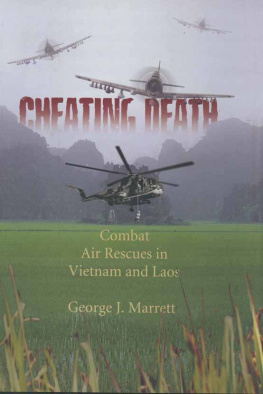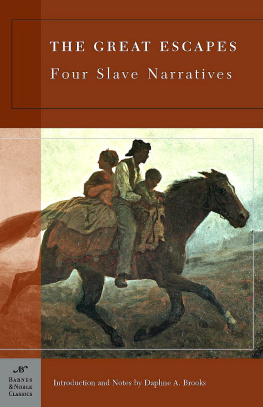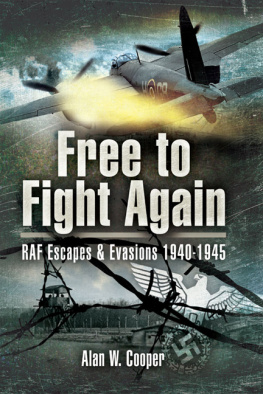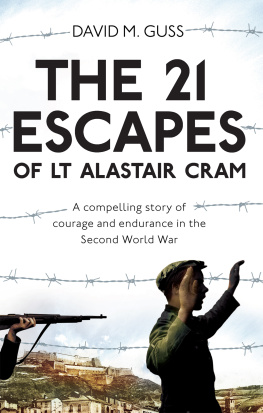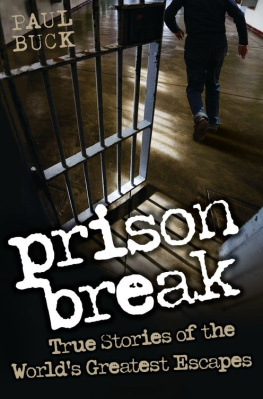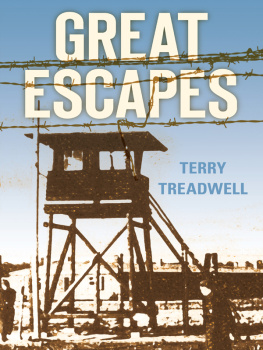Great Wartime Escapes and Rescues
David W. Mills and Kayla L. Westra

Copyright 2019 by ABC-CLIO, LLC
All rights reserved. No part of this publication may be reproduced, stored in a retrieval system, or transmitted, in any form or by any means, electronic, mechanical, photocopying, recording, or otherwise, except for the inclusion of brief quotations in a review, without prior permission in writing from the publisher.
Library of Congress Cataloging-in-Publication Data
Names: Mills, David W., 1965- author. | Westra, Kayla L., 1996- author.
Title: Great wartime escapes and rescues / David W. Mills and Kayla L. Westra.
Description: First edition. | Santa Barbara, CA : ABC-CLIO, LLC, 2019. | Includes bibliographical references and index.
Identifiers: LCCN 2018055595 (print) | LCCN 2019005451 (ebook) | ISBN 9781440859168 (ebook) | ISBN 9781440859151 (hardcover : alk. paper)
Subjects: LCSH: Prisoner-of-war escapesHistoryEncyclopedias. | RescuesEncyclopedias. | History, MilitaryEncyclopedias.
Classification: LCC D25.5 (ebook) | LCC D25.5 . M4975 2019 (print) | DDC 355.1/29603dc23
LC record available at https://lccn.loc.gov/2018055595
ISBN: 978-1-4408-5915-1 (print)
978-1-4408-5916-8 (ebook)
23 22 21 20 19 1 2 3 4 5
This book is also available as an eBook.
ABC-CLIO
An Imprint of ABC-CLIO, LLC
ABC-CLIO, LLC
147 Castilian Drive
Santa Barbara, California 93117
www.abc-clio.com
This book is printed on acid-free paper 
Manufactured in the United States of America
I am forever grateful for the love and support of my wife, Ann, and our three children: Sam, Joey, and Jake. Without their patience and understanding, this life would not be possible. I also appreciate the staff, faculty, and administration at Minnesota West Community and Technical College who have supported me in the past, as well as the faculty and leadership in the Department of Military History at Command and General Staff College who have taught me much about being a historian. Finally, I am thankful for my friend, Kayla Westra, without whom this book would not be possible.
David. W. Mills
Words cannot express my gratitude for my familyDayton, Madeline, and Clairefor their unwavering support and encouragement. I love you all beyond measure. I am also thankful for my work at Minnesota West Community and Technical College and the commitment of the leadership team to providing access and opportunity to the students in our region. And thank you, Dave Mills, for asking me to be a partner on this project and for sharing your passion for history and learning.
Kayla L. Westra
Contents
List of Entries
Introduction
For many who entered military service throughout history, the most terrifying aspect of combat was not death, but the possibility of falling into enemy hands as a prisoner of war. Some men of Custers 7th Cavalry chose to commit suicide rather than fall into enemy hands, an act repeated throughout the history of warfare, from the Siege of Masada through the present day. In almost all of these instances, the fear of falling into enemy handsand the torture or mistreatment that went with itwas greater than the fear of death itself. This book chronicles a common thread through the many escapes and rescues examined here, and that was the bravery of the men and women who submitted to capture, launched rescue operations, or those who simply assisted the pursued in their quest to escape.
Many military and civilian people examined in this book were taken into custody against their will, either as members of a hostile military organization during war, or as civilians in the wrong place at the wrong time. Those people were terrified that they would be killed, and the uncertainty of their immediate future was more terrifying. Would they ever see their families again? If so, when? These and a million other questions raced through their minds as they raised their hands above their heads, accepting their capture. Once in prison, the idea of escape was a tempting one, but few people statistically ever attempted to break out. The odds were simply not in their favor. They lacked resources, clothing, and language skillsand geography often worked against them. If they were recaptured, they might be killed or endure physical abuse, or perhaps harder to accept, their fellow prisoners might suffer in their place. The men and women in this book were exceptionally brave, risking all to escape their captors.
One of the greatest breakouts from a prison camp was the escape from Stalag Luft III, when 77 prisoners made it out of the tunnel they had dug and to freedom. Most of the men were eventually caught and 50 were executed, but 3 did make it home. Franz von Werra was a German prisoner of war who almost escaped from England by stealing a fighter plane, but he was sent to America after authorities discovered the plot. Once in North America, he leaped from a train, then made his way from Canada to America. He further escaped to Mexico, then South America, and eventually to Italy and home. Nick Rowe was a Green Beret in Vietnam who spent five years as a prisoner. Eventually, he saw an opportunity to escape when a helicopter flew near his location. Rather than a specific escape plan, chance came to Rowes rescue that day.
Sometimes, prisoners would receive assistance in escape whether or not they wanted it. In the case of the Son Tay raid, American forces attempted to rescue prisoners from a Vietnamese prison camp, only to discover that the camp was empty. The greatest rescue in history was probably the effort to evacuate the British army from the continent at the start of World War II, when over 300,000 soldiers were taken off the French beaches and brought back to England. In another instance, Allied airmen in Italy orchestrated a rescue of over 500 Allied soldiers and airmen before the Germans in Yugoslavia could take them prisoner. Perhaps the most daring rescue was of Benito Mussolini in World War II. His rescuers landed on a mountaintop, freed him, then took off in a small plane and flew him to safety. Often, the most heroic aspect of a rescue was in the minutes, hours, or days after a pilot was shot down behind enemy lines. It took an incredible amount of determination on the part of the pilot not to give up, especially as hunger and other conditions took their toll. For rescuers, often flying in slow and vulnerable helicopters, the satisfaction of pulling a fellow American out of a hostile environment was immense.
Probably the most overlooked aspect of escape attempts was the assistance from members of the population, at great risk to themselves. William Ash was shot down over France, and he received help from many partisans that passed him from home to home, though the Germans captured him and executed many of his friends. The fliers shot down over Yugoslavia were helped by partisans, often giving up the only food they had to feed Allied fliers. Inmates in the Los Baos prison camp would escape and seek food from the Philippine population, then sneak back into the camp to share the food with those who were physically unable to walk or fend for themselves. In their escape, James McBrayer and three other American marines traveled hundreds of miles, assisted by the generosity of Communist Chinese guerillas, and were delivered to an airfield where American planes operated, flying them to freedom.
Wartime rescues, escapes, kidnappings, and terrorist operations make up the crux of the stories contained here, though each one is a little different from the others. The men and women depicted are true heroes, often disregarding their own freedom in order to save others. We have done our best to accurately retell these stories in a way that brings the people and their tales to life. Any errors or omissions are unintentional. We hope that you enjoy the stories about escapes and rescues contained in this book.
Next page


